Welcome to our guide on raising guinea fowl sustainably! Guinea fowl are often overlooked as a sustainable protein source, but they benefit the environment and farmers. In this post, we’ll explore the benefits of raising guinea fowl sustainably, benefits and how to do so in an eco-friendly way. We’ll also discuss farmers’ challenges when transitioning to sustainable guinea fowl production and offer solutions to overcome them.
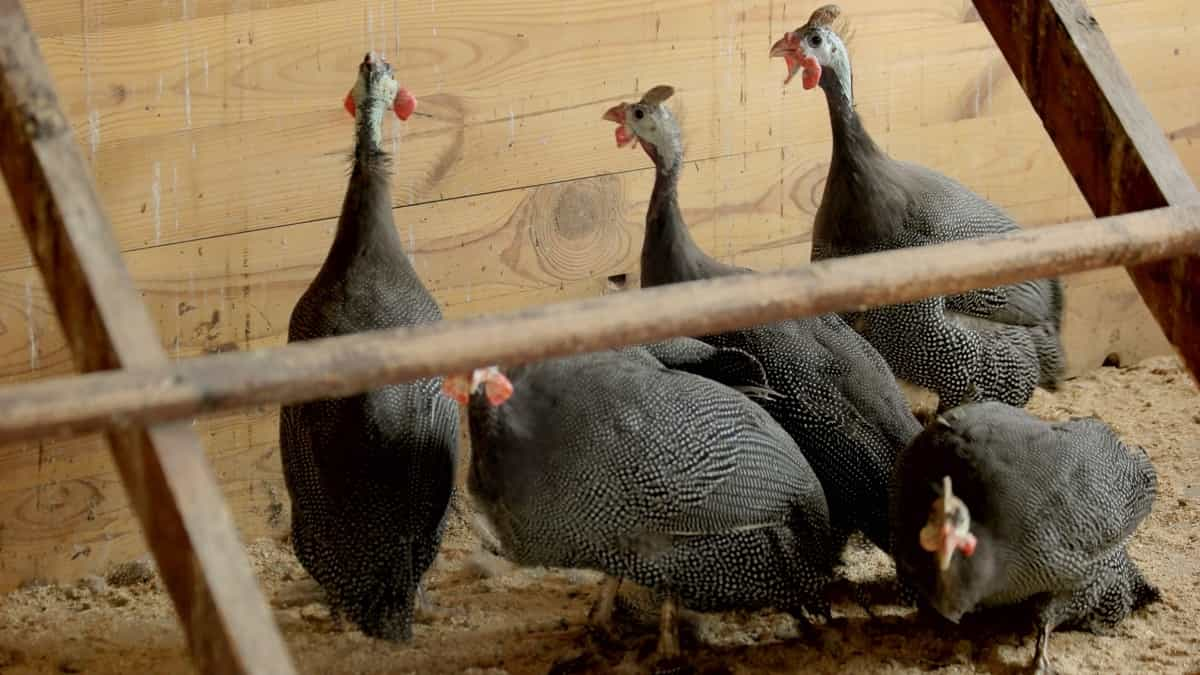
Sustainable Guinea Fowl Production
What is Guinea Fowl Farming?
Guinea fowl farming is a type of poultry farming that involves raising guinea fowl for their eggs and meat. Guinea fowl are also known as “Chitra” and “Titari” and are low-input alternative poultry species adapted to different Indian agro-climatic conditions. They are most appropriate for backyard poultry production due to their hardiness and ability to forage and consume non-conventional feed.
One of the benefits of raising guinea fowl is their meat, which is rich in vitamins and low in cholesterol, making it a healthy and tasty protein source for consumers. In addition, guinea fowl are eco-friendly and help control pests, worms, and insects while also providing manure for the field. However, their seasonality of reproduction or egg production can be a major problem limiting their egg production and obstructing large-scale commercial production.
To overcome this challenge, breeding programs have been implemented to develop Guncari birds, which are improved for high disease resistance and a better growth rate. Three varieties of Guncari birds, namely Kadambari, Swetambari, and Chitambari, are available for commercial utilization. These birds are hardy, suitable for agro-climatic conditions, and have excellent foraging capabilities. They are also more tolerant to mycotoxins, and their hard egg shells provide minimum breakage and long-keeping quality.
Know More About Guinea Fowl
- Guinea fowl are ground-nesting birds with featherless heads found in sub-Saharan Africa. They are insect and seed eaters and resemble partridges but have dark gray or blackish plumage with dense white spots, except for the two species in the Agelastes genus.
- These large birds measure 40-71 cm in length and weigh 700-1,600 g. Guinea hens, which are females, are heavier than guinea cocks, possibly because of their larger reproductive organs.
- Guinea fowl are known for their excellent livability and relatively low disease susceptibility. The helmeted guinea fowl has been introduced to several regions outside of its native habitat and is raised for food or as pets.
- Regarding production characteristics, guinea fowl typically weigh 600-620 g at eight weeks and 1,000-1,035 g at 12 weeks, with age at the first egg of 230-250 days and an egg weight of 40-43 g.
In case you missed it: Guinea Fowl Farming – Brooding, Rearing, Feeding
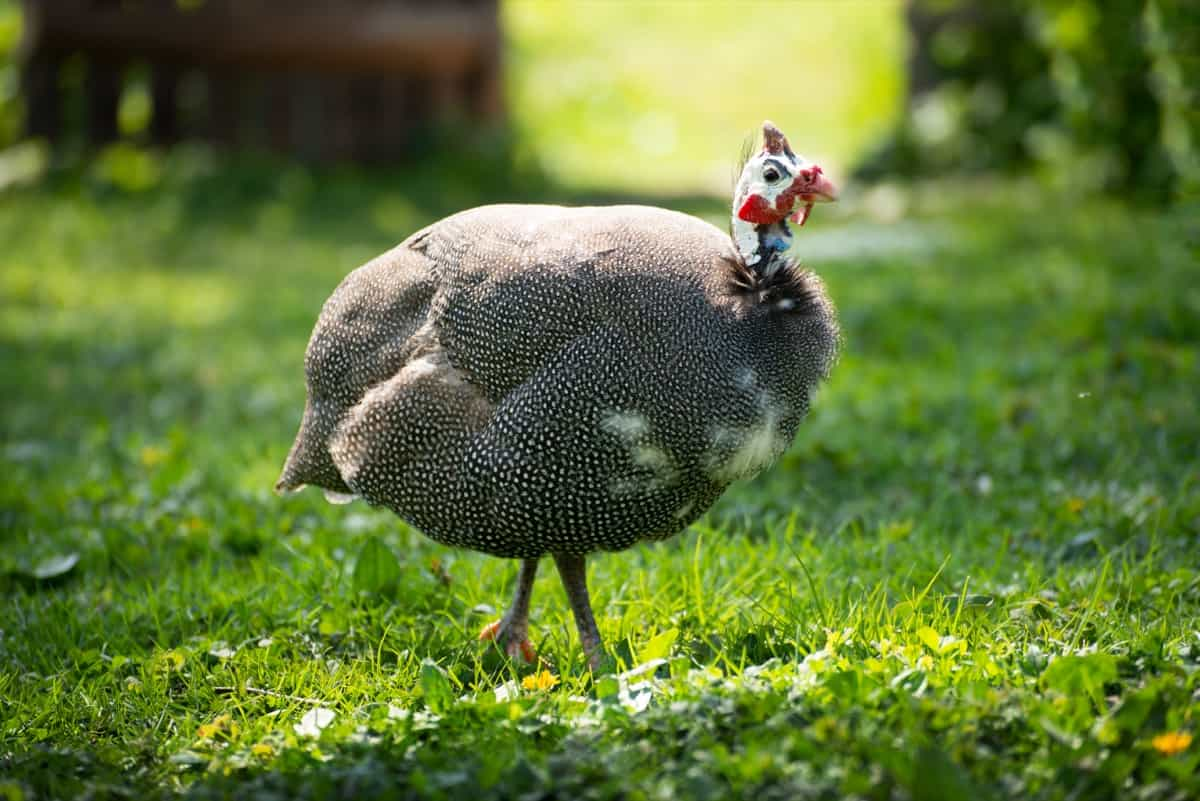
Benefits of Guinea Fowl Farming
- Guinea fowls are hardy and strong birds that are easier to care for and manage and less prone to disease than other domestic poultry birds.
- Their smaller size means they require less housing space and incur lower accommodation costs. Guinea fowls are also adaptable to various feed options, making feeding easier. Raising guinea fowls for commercial purposes is also highly profitable and can provide employment opportunities for educated individuals.
- There is a good demand for guinea fowl products, reducing the need to worry about marketing efforts.
- Starting a guinea fowl farming business allows one to enjoy fresh meat or eggs and good business.
How to Start Sustainable Guinea Fowl Farming
Sustainable guinea fowl farming is a great way to raise these birds while minimizing their environmental impact. Here are some steps to get started:
- Research the market demand: Before starting any farming venture, it is important to conduct market research to understand the need for the product. You can reach out to potential buyers, supermarkets, and restaurants to gauge the need for guinea fowl meat and eggs.
- Plan your farm: Once you know the market demand, plan your farm. Identify the ideal location, size, and facilities for guinea fowl farming. You should also consider the cost of building a coop, feeding, and other resources required.
- Get the necessary permits: Guinea fowl farming may require permits or licenses from the local authorities. You must check with the local government to determine the regulations and requirements.
- Choose your guinea fowl breed: There are several guinea fowl breeds available, including the Pearl, Lavender, White, and Royal Purple. Choose the best species that are well-suited to your climate and environment.
- Set up your farm: Build your coop, install waterers and feeders, and provide a suitable environment for your guinea fowl. Ensure they have the required space to move around and the coop is well-ventilated.
- Feed your guinea fowl: Guinea fowl require a balanced diet of grains, seeds, and insects. You can feed them commercial feeds or make your feed.
- Manage your farm: Regularly clean and maintain the coop, monitor the health of your guinea fowl, and keep records of your farming activities.
In case you missed it: Paddy Cultivation through Direct Seeding Technology: A Profitable Rice Production Method
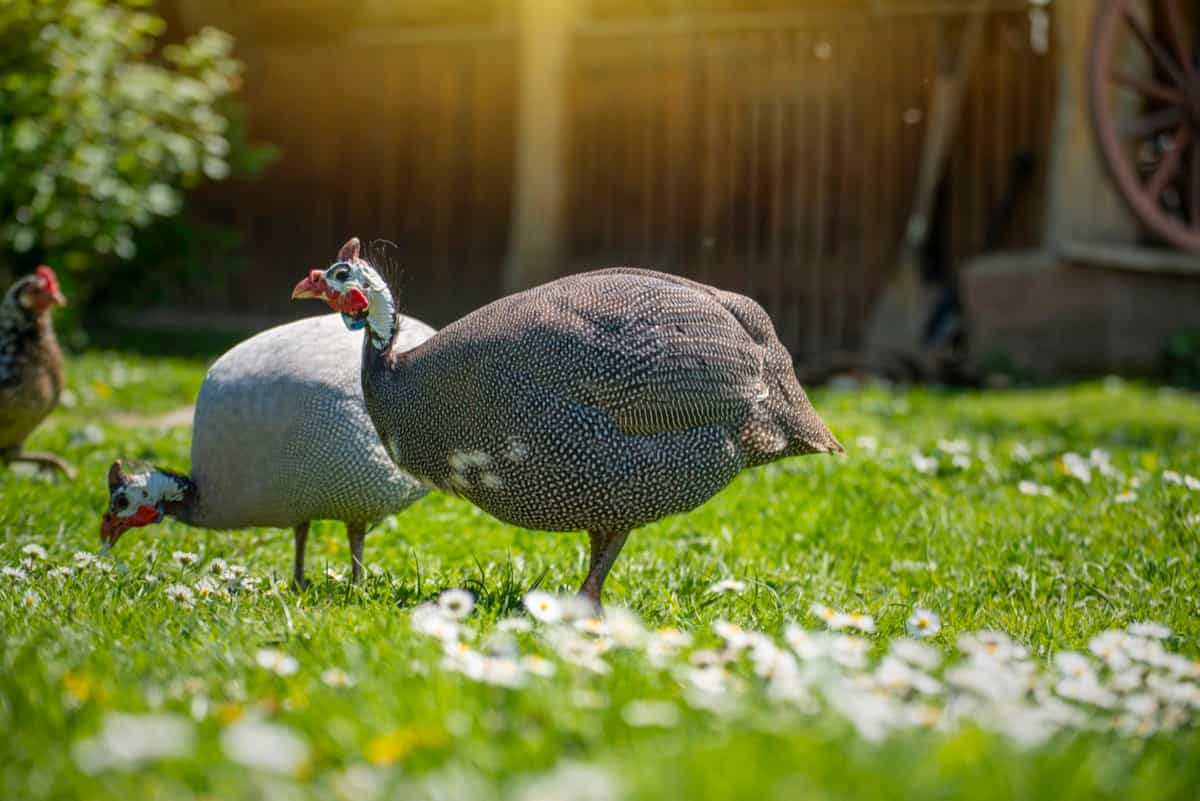
How to Raise Guinea Fowl
- Guinea fowl are noisy and difficult to catch, so it is important to have a fully enclosed coop ready before bringing them home. The coop should provide at least three to four square feet of space per bird, along with food and water, clean bedding, and perches.
- Consider providing a night-time shelter to protect them from predators like foxes and owls, and make sure it has a light and two entries.
- When choosing your birds, buying them in male-female pairs is best, and it’s easier to tame them if you raise them from keets. Once you bring your guinea fowl home, give them time to adapt to their new environment before allowing them to roam free.
- When it comes to feeding them, if they are allowed to roam, they will eat all sorts of critters in your yard, so you don’t need to provide them with additional food, but mixed grains in their shelter at night can encourage them to spend the night there.
Sustainable Guinea Fowl Production Methods
Sustainable guinea fowl production methods aim to promote the long-term viability of guinea fowl farming while reducing the negative effect on the environment and promoting animal welfare. The following topics should be covered when discussing sustainable guinea fowl production methods:
- Breeding and brooding: Sustainable guinea fowl production methods should focus on using healthy and genetically diverse breeding stock. Proper brooding techniques, such as temperature and humidity control, should be followed to ensure the chicks’ health and welfare.
- Rearing and feeding: The rearing process should provide sufficient space and environmental enrichment for natural behavior and exercise. Sustainable feed options, such as locally sourced or home-grown, should be used to avoid feed waste and minimize antibiotics and other drugs.
- Disease prevention and treatment: Preventing disease is key to sustainable guinea fowl production. Biosecurity and precautionary measures should be implemented to prevent the development of diseases in the flock, and poultry care should be sought immediately if signs of illness are observed.
- Processing and marketing: Sustainable guinea fowl production methods should prioritize humane slaughter techniques and minimize waste in processing. Marketing should focus on promoting the benefits of sustainable guinea fowl production, such as using eco-friendly practices and high animal welfare standards.
Sustainable Guinea Fowl Eco-Friendly Production
- Guinea fowl are domesticated birds that are raised for meat and eggs, and they are also used for pest control. The male guinea fowl is called a guinea cock, the female is called a guinea hen, and their young are known as keets.
- Guinea fowl eggs are typically incubated for 26-28 days, and the temperature in the incubator should be 100°F in forced-air incubators and 102°F in still-air incubators. Guinea fowl can be raised with broody chickens, as they are not good mothers.
- After the keets have hatched, they should be kept warm and dry, with a brooder temperature of approximately 95°F for the first week, dropping 5°F every three days until the end of the brooding period.
- Guinea fowl require a 28% protein starter feed, which should be fed for approximately 6-8 weeks, then gradually changed to an 18% protein all-purpose ration.
- Once the guinea keets are fully feathered, they can be moved to an outdoor coop. Guinea fowl should be kept in their new home for 6-8 weeks to imprint them on the land, and a small pen attached to the coop should allow them to look out and observe their surroundings. They should be herded in every night to train the guinea hens to return to the coop.
- It can be difficult to identify between male and female guinea fowl. Voice is the only way to tell males from female guinea fowl, as males will make a “chin, chin, chin” sound, and females will make a “buck wheat” sound. Guineas lay small, light brown pointed eggs, which can also be used for pest control.
In case you missed it: How to Improve Feed Conversion Ratio (FCR) in Poultry Farming: Key Rules for Beginners
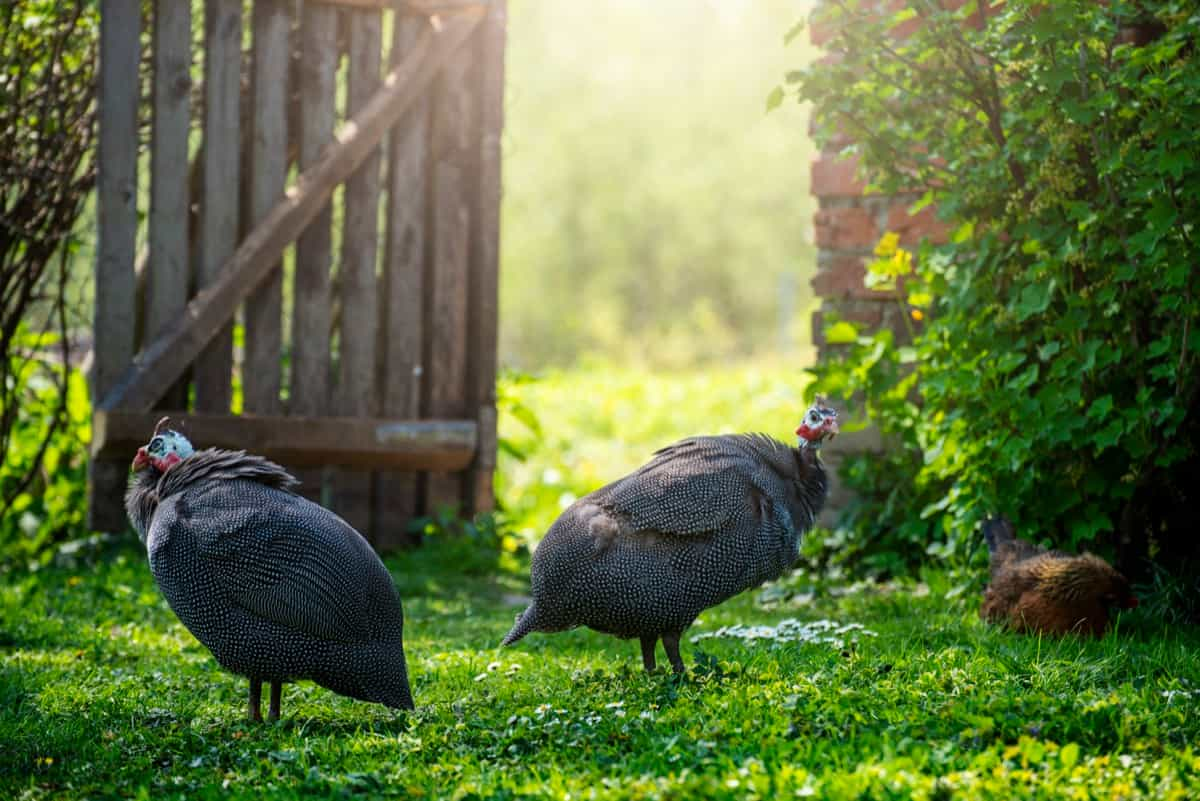
The Benefits of Sustainable Guinea Fowl Production
- Reduced environmental impact: Sustainable guinea fowl production practices help reduce the environmental impact of farming activities. For example, raising guinea fowl in free-range systems reduces soil degradation, water pollution, and deforestation.
- Improved animal welfare: Guinea fowl raised in sustainable production systems experience better welfare and quality of life. They can engage in natural behaviors such as foraging and dust bathing.
- High-quality meat: Guinea fowl meat is a lean, flavorful, and healthy source of protein. Sustainable guinea fowl production ensures the meat is free from harmful chemicals and antibiotics.
- Increased income: Sustainable guinea fowl production can provide a reliable source of income for farmers, especially in rural areas where alternative income streams may be limited.
- Employment opportunities: Guinea fowl farming can create employment opportunities for both skilled and unskilled labor.
- Reduced carbon footprint: Sustainable guinea fowl production practices can help reduce the carbon footprint of farming activities by reducing greenhouse gas emissions.
- Diversification: Raising guinea fowl can diversify a farm’s product offerings, providing additional revenue streams and increasing the farm’s resilience.
- Improved soil health: Guinea fowl can help improve soil health through natural fertilization and reduced soil compaction.
- Food security: Sustainable guinea fowl production can contribute to food security by providing a source of high-quality protein.
- Community development: Sustainable guinea fowl production can contribute to the development of local communities by providing employment opportunities, increasing income, and improving food security.
Improved Guinea Fowl Production Technology Will Support Farmers in Increasing Income
The objective was to reduce the age of the first egg, extending the laying period and ultimately improving egg production. Through dietary and light management interventions, the researchers found that an 18-hour photoperiod, 20% dietary protein, Vitamin E (120 mg / Kg feed), and Se (0.8 mg / Kg feed) triggered the reproductive hormones resulting in egg production in winter. The hen day egg production was 53% to 56% in winter, with yearly egg production of 180-200 eggs.
In case you missed it: 16 Key Rules for Effective Shrimp/Prawn Farm Management: From Planning to Reduce Production Cost
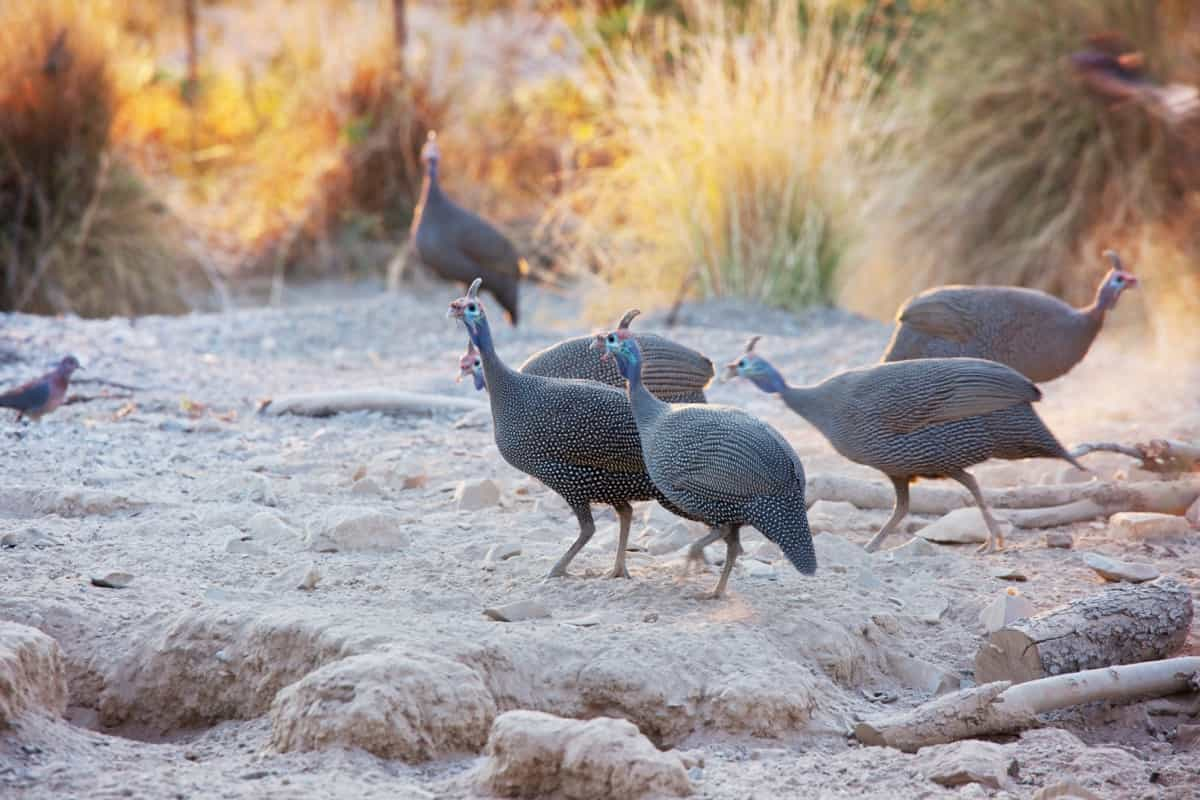
From 2016 to 2021, to break the seasonality in reproduction in the Pearl variety of Guinea Fowl. By adopting this technology for 1,000 guinea fowl on his farm, Ahemad earned 3 to 4 times more yearly income by selling the fertile eggs, chicks, and live birds to West Bengal and North-East States. Farmers can adopt this improved technology for farm guinea fowl production and increase their income.
Challenges to Sustainable Guinea Fowl Production
- Seasonality: Guinea fowl have a seasonal reproduction cycle, which limits egg production and makes large-scale commercial production difficult.
- Disease management: Guinea fowl are susceptible to a number of diseases and parasites, including Newcastle disease and coccidiosis, which can cause significant losses if not managed properly.
- Lack of breeding programs: There are no breeding programs specifically for guinea fowl, so farmers may not have access to high-quality breeding stock.
- Market access: Access to markets for guinea fowl products can be limited, making it difficult for farmers to sell their products and earn a decent income.
- Feed availability: Guinea fowl require a high-protein diet, which can be expensive or unavailable to small farmers and difficult to obtain in some areas.
- Lack of knowledge: Many farmers may not have the necessary knowledge or skills to properly care for and manage guinea fowl, leading to poor production outcomes.
In case you missed it: Key Rules to Improve Feed Conversion Ratio (FCR) in Sheep: For Profitable Sheep Farming
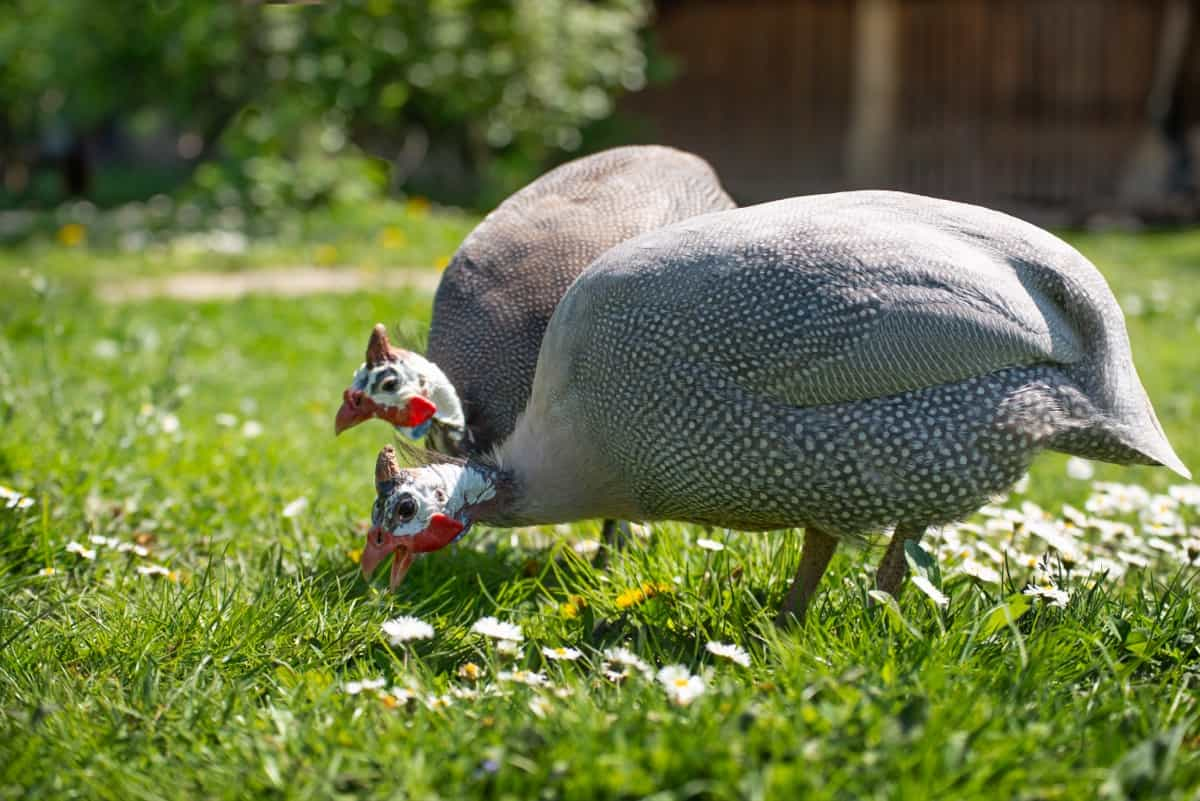
Conclusion
Sustainable Guinea Fowl production offers numerous benefits, including eco-friendliness, low input costs, and improved farmer income. However, seasonality and disease control must be addressed to ensure long-term success. Proper management and adoption of innovative technologies can help overcome these challenges and promote sustainable production.
- Economical Aquaculture: A Guide to Low-Budget Fish Farming
- 15 Common Planting Errors That Can Doom Your Fruit Trees
- How to Make Houseplants Bushy: Effective Tips and Ideas
- Innovative Strategies for Boosting Coconut Pollination and Yield
- Pollination Strategies for Maximum Pumpkin Yield
- The Complete Guide to Chicken Fattening: Strategies for Maximum Growth
- Natural Solutions for Tulip Problems: 100% Effective Remedies for Leaf and Bulb-Related Issues
- Revolutionizing Citrus Preservation: Towards a Healthier, Greener Future
- Natural Solutions for Peony Leaf and Flower Problems: 100% Effective Remedies
- Maximizing Profits with Avocado Contract Farming in India: A Comprehensive Guide
- Natural Solutions for Hydrangea Problems: 100% Effective Remedies for Leaf and Flowers
- The Ultimate Guide to Choosing the Perfect Foliage Friend: Bringing Life Indoors
- From Sunlight to Sustainability: 15 Ways to Use Solar Technology in Agriculture
- The Ultimate Guide to Dong Tao Chicken: Exploring from History to Raising
- The Eco-Friendly Makeover: How to Convert Your Unused Swimming Pool into a Fish Pond
- Mastering the Art of Delaware Chicken Farming: Essentials for Healthy Backyard Flocks
- 20 Best Homemade Fertilizers for Money Plant: DIY Recipes and Application Methods
- How to Craft a Comprehensive Free-Range Chicken Farming Business Plan
- Brighten Your Flock: Raising Easter Egger Chickens for Beauty and Bounty
- How to Optimize Your Poultry Egg Farm Business Plan with These Strategies
- Subsidy for Spirulina Cultivation: How Indian Government Schemes Encouraging Spirulina Farmers
- Ultimate Guide to Raising Dominique Chickens: Breeding, Feeding, Egg-Production, and Care
- Mastering the Art of Raising Jersey Giant Chickens: Care, Feeding, and More
- Ultimate Guide to Raising Legbar Chickens: Breeding, Farming Practices, Diet, Egg-Production
- How to Raise Welsummer Chickens: A Comprehensive Guide for Beginners
- How to Protect Indoor Plants in Winter: A Comprehensive Guide
- Ultimate Guide to Grow Bag Gardening: Tips, Tricks, and Planting Ideas for Urban Gardeners
- Guide to Lotus Cultivation: How to Propagate, Plant, Grow, Care, Cost, and Profit
- Agriculture Drone Subsidy Scheme: Government Kisan Subsidy, License, and How to Apply Online
- Ultimate Guide to Raising Araucana Chickens: Breed Profile, Farming Economics, Diet, and Care
- Bringing Hydroponics to Classroom: Importance, Benefits of Learning for School Students
- Ultimate Guide to Raising Polish Chickens: Breed Profile, Farming Economics, Diet, and Care
- Ultimate Guide to Raising Australorp Chickens: Profile, Farming Economics, Egg Production, Diet, and Care
- Silkie Chicken Farming: Raising Practices, Varieties, Egg Production, Diet, and Care
- Sussex Chicken Farming: Raising Practices, Varieties, Egg Production, Diet and Care
- Homemade Feed Formulations for Livestock: Discover Cost-effective Starter to Finisher Feed Recipes